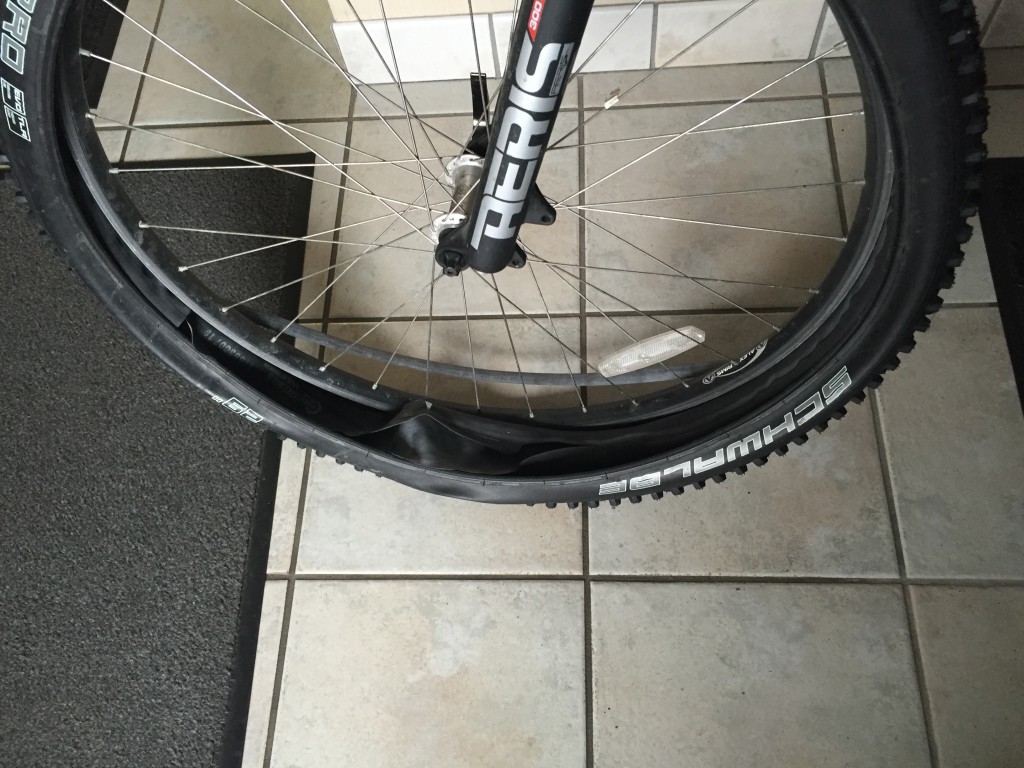When it comes to winter bike commuting, I’m somewhat of a cheater: I only ride to work when it’s convenient.
For example, if I’m meeting someone on the other end of town after work, I drive. But it’s almost always more convenient to throw a leg over the saddle than to reach for the car keys – because I’ve made it that way.
It’s only October, but here in America’s snow boot we know winter is coming! Last year I had the opportunity to become a year-round bike commuter, thanks to a new job with a very convenient location. My not-so-new job has now moved to a new location, and my commute is 4 miles instead of 1, but it’s all do-able even in the winter. Here are some things I did to make it a no-brainer to spin to work on most days rather than driving.
Two Bikes
My biggest cheat is by having two bikes. Being a bike “enthusiast” it’s natural that I have a couple of bikes. Every winter I put winter tires (and fenders) on both of them. They’re strategically set up for varying levels of winter weather, so I just ride which ever one is more appropriate for the weather that morning, or what is forecasted for that day. One bike is for nice winter days, and the other is for harsh winter days.
Continue reading →
Bike 1: wet/slush
The bike for the “nice days” is my Surly Cross Check. It’s a road bike with a little more clearance all-around. It has tons of eyelets for racks and fenders, and a bunch of extra room for larger tires. For winter I put on full fenders and a set of WTB All Terrain tires.
This is the go-to bike when there’s guaranteed bare pavement all the way to work, or if it’s just wet and slushy (no hard ice) that you’ll likely encounter on the trip.
You can’t do this on just any road bike because many do not leave enough space in the front fork and the rear frame to install wider tires, let alone fenders for them. Sell that bike on craigslist or don’t ride it in the winter and get yourself something more sensible. It doesn’t have to be a “gravel bike” or anything specific, it just needs to have some extra space for wider tires and mounts for racks and fenders.
Bike 2: snow/ice
The bike for the harsh days is my mountain bike. Being a mountain bike isn’t what makes it great. Sure the tires are wider, the gearing lower, and the handlebar flatter. It’s really the studded tires.
If you’re planning on riding throughout winter, studded tires are a must. I can ride with confidence over the worst ice, with my laptop in my pannier without worrying about going down. When I’m riding I actually seek out a little bit of snow or ice to quiet the chatter (and wear) of the tire studs.
Studded tires aren’t for everyone and you may just want to only ride on days when it’s not death-defyingly slippery. The cost of studded tires can get sort-of bonkers. Like per-tire cost greater than the winter tires on my Subaru – kinda crazy.
Accoutrements
The rest of the stuff is just clothes. I have a few sets of gloves that I choose from:
On the really cold days, I’ll wear ski goggles instead of sunglasses. It’s the only way to prevent icicles on your eyelashes.
Those temperatures aren’t exact, just guidelines. You’ll want to experiment and decide for yourself. Much depends on how far you’re riding and what your normal tolerances are. Other factors include whether the sun is out, how windy it will be, and if you’ll be riding after dark. The same goes for other clothing options: long johns, top layers, type and thickness of socks, etc.
Some people like to keep a journal of what they wore, what the riding conditions were, and how they felt. I might do that with my longer commute this winter, as I’m guessing I’ll actually build up more body heat with the longer distance.
If you’ve got experience in this department, please share. Otherwise I’ll report back in the spring!











